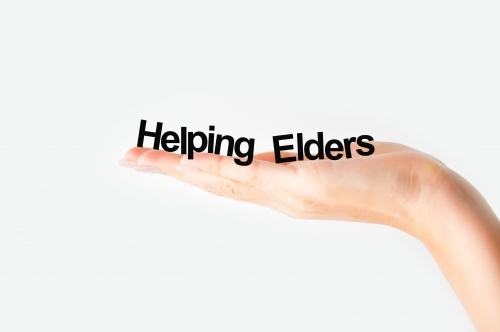
Growing old is costly. Take, for instance, the expense of health insurance and the costs of long-term care, housing, and chronic disease treatments. How will our economy withstand the rising overheads? It simply cannot. In the next few years, we won't have the luxury of being independent of others. It's a matter of acting responsibly and saving the resources we have abruptly neglected in the past.
The way I see, the aging population should be seen as a massive opportunity, not as the elephant in the room. Maybe it's time that we create services from underused assets.
Right here in the U.S., consumers flock to sharing cars, bikes, household goods, renting homes, clothes, jewelry, and even food. And it's not just the states either. It's happening all around the world. My first experience of peer-to-peer sharing was Car2Go but there's a new wave of businesses changing how we do business and consumers are all over them. Technology has helped companies take the leap into the sharing economy. The question:
How can we implement the sharing economy strategies to help older residents continue to live at home?
AARP says that's where most seniors want to grow older, plus living at home is gentler on the pocketbook. And consumers jump at the chance to give back, especially to the more elderly population. Take a look at this volunteer guide to get a quick glance of how people rally around helping the needy.
I also found a report created by PwC.com and the BAV Consulting. Together they studied the sharing economy and how consumers relate and respond to it. Take a look at a few of the companies involved in the sharing economy:
- Hospitality and Dining: CouchSurfing, Airbnb, Feastly, LeftoverSwap
Automotive and Transportation: RelayRides, Hitch, Uber, Lyft, Getaround, Sidecar Retail and Consumer Goods: Neighborgoods, SnapGoods, Poshmark, Tradesy Media and Entertainment: Amazon Family Library, Wix, Spotify, SoundCloud, Earbits After reading the report, I ask,
Is it possible for entrepreneurs to tap into consumers desire to assist and create a sharing model to help older adults receive care at home and help them maintain a safe environment while feeling connected?
First, let's look at the issues older Americans face when living at home:
Safe environment with minimum exposure to tripping and falls Remembering to take medications Unable to keep up with household chores and housekeeping Poor nutrition or malnutrition Home safety hazards such as poor lighting and loose carpeting Unable to pay bills on timeThe list clearly defines what seniors are up against in their quest of aging-in-place.
How the Sharing Economy solve these issues (or can it?)
In an article in Senior Housing News, it confirmed that senior care technology (developed today) is barely used by older consumers and questions whether developers has identified the things that people need. The article states, only 14% of respondents (seniors) in the survey use personal emergency response systems (and it was the most widely used,) a mere 9% used medication management technology; 4% said they used Internet-based care coordination sites, and just 1% utilized telehealth remote monitoring systems.
It seems developers miss the point when designing services for seniors. Older adults don't care much for the tech features but prefer anything that keeps them safe, secure and connected.
According to a report from PwC on "The Sharing Economy," the 55+ age group was one of the most frequent providers in the peer-to-peer transactions. In fact, that sector participated in the sharing economy at a rate nearly four times that of the overall U.S. population.
It seems a perfect fit for seniors. Most services offered by the sharing model is cost effective. Say, for example, ride sharing via Uber or DriveNow (very cool, BMW car sharing) allows an individual to "use" the vehicle or service at a particular time.
Individuals don't worry about parking it when not in use, buying insurance, paying property taxes, licensing fees, or purchasing tires and keeping up with the maintenance (sign me up!) Especially if a senior no longer drives, a service like Spedsta is a match made in heaven.
But what about the biggest problem of all, the one that has the industry up in arms? Caregivers. The family caregiver is the lifeblood of senior care today, but that care group is shrinking, according to AARP. Here is the breakdown:
- In 2010, there were seven potential caregivers for every 80+-year-old.
In 2030, the ratio will decline to 4 to 1. In 2050, it falls to less than 3 to 1. The rising need for care and the shrinking families demand a call for new solutions. Is the sharing economy the answer?
What do you think? Can peer-to-peer solutions help our aging population and the rising costs of health care? If you could solve the caregiver shortage, what would your solution be?
Our 2024 Coverage Needs You
It's Another Trump-Biden Showdown — And We Need Your Help
The Future Of Democracy Is At Stake
Our 2024 Coverage Needs You
Your Loyalty Means The World To Us
As Americans head to the polls in 2024, the very future of our country is at stake. At HuffPost, we believe that a free press is critical to creating well-informed voters. That's why our journalism is free for everyone, even though other newsrooms retreat behind expensive paywalls.
Our journalists will continue to cover the twists and turns during this historic presidential election. With your help, we'll bring you hard-hitting investigations, well-researched analysis and timely takes you can't find elsewhere. Reporting in this current political climate is a responsibility we do not take lightly, and we thank you for your support.
Contribute as little as $2 to keep our news free for all.
Can't afford to donate? Support HuffPost by creating a free account and log in while you read.
The 2024 election is heating up, and women's rights, health care, voting rights, and the very future of democracy are all at stake. Donald Trump will face Joe Biden in the most consequential vote of our time. And HuffPost will be there, covering every twist and turn. America's future hangs in the balance. Would you consider contributing to support our journalism and keep it free for all during this critical season?
HuffPost believes news should be accessible to everyone, regardless of their ability to pay for it. We rely on readers like you to help fund our work. Any contribution you can make — even as little as $2 — goes directly toward supporting the impactful journalism that we will continue to produce this year. Thank you for being part of our story.
Can't afford to donate? Support HuffPost by creating a free account and log in while you read.
It's official: Donald Trump will face Joe Biden this fall in the presidential election. As we face the most consequential presidential election of our time, HuffPost is committed to bringing you up-to-date, accurate news about the 2024 race. While other outlets have retreated behind paywalls, you can trust our news will stay free.
But we can't do it without your help. Reader funding is one of the key ways we support our newsroom. Would you consider making a donation to help fund our news during this critical time? Your contributions are vital to supporting a free press.
Contribute as little as $2 to keep our journalism free and accessible to all.
Can't afford to donate? Support HuffPost by creating a free account and log in while you read.
As Americans head to the polls in 2024, the very future of our country is at stake. At HuffPost, we believe that a free press is critical to creating well-informed voters. That's why our journalism is free for everyone, even though other newsrooms retreat behind expensive paywalls.
Our journalists will continue to cover the twists and turns during this historic presidential election. With your help, we'll bring you hard-hitting investigations, well-researched analysis and timely takes you can't find elsewhere. Reporting in this current political climate is a responsibility we do not take lightly, and we thank you for your support.
Contribute as little as $2 to keep our news free for all.
Can't afford to donate? Support HuffPost by creating a free account and log in while you read.
Dear HuffPost Reader
Thank you for your past contribution to HuffPost. We are sincerely grateful for readers like you who help us ensure that we can keep our journalism free for everyone.
The stakes are high this year, and our 2024 coverage could use continued support. Would you consider becoming a regular HuffPost contributor?
Dear HuffPost Reader
Thank you for your past contribution to HuffPost. We are sincerely grateful for readers like you who help us ensure that we can keep our journalism free for everyone.
The stakes are high this year, and our 2024 coverage could use continued support. If circumstances have changed since you last contributed, we hope you'll consider contributing to HuffPost once more.
Already contributed? Log in to hide these messages.

